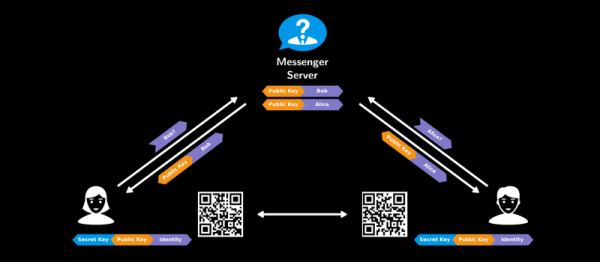If you had to explain why you use one mobile messaging service over another to your grandmother, would you be able to? Does she even care about forward secrecy or the difference between a private and public key is? Maybe she would if she understood the issues in relation to “normal” human experiences: holding secret discussions behind closed doors and sending letters wrapped in envelopes.
Or maybe your grandmother is the type who’d like to completely re-implement the messaging service herself, open source and verifiably secure. Whichever grandma you’ve got, she should watch [Roland Schilling] and [Frieder Steinmetz]’s talk where they give both a great introduction into what you might want out of a secure messaging system, and then review what they found while tearing apart Threema, a mobile messaging service that’s popular in Germany. Check out the slides (PDF). And if that’s not enough, they provided the code to back it up: an open workalike of the messaging service itself.
This talk makes a great introduction, by counterexample, to the way that other messaging applications work. The messaging service is always in the middle of a discussion, and whether they’re collecting metadata about you and your conversations to use for their own marketing purposes (“Hiya, Whatsapp!”) or not, it’s good to see how a counterexample could function.
The best quote from the talk? “Cryptography is rarely, if ever, the solution to a security problem. Cryptography is a translation mechanism, usually converting a communications security problem into a key management problem.” Any channel can be made secure if all parties have enough key material. The implementation details of getting those keys around, making sure that the right people have the right keys, and so on, are the details in which the devil lives. But these details matter, and as mobile messaging is a part of everyday life, it’s important that the workings are transparently presented to the users. This talk does a great job on the demystification front.













